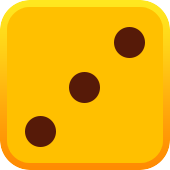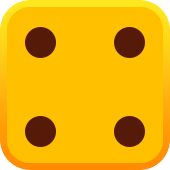












This timeless card game stands as one of the most popular choices played in both brick-and-mortar gambling venues and online platforms. To fully savor the experience and boost your odds of success, getting a firm grasp of the blackjack rules is vital. This overview will lead you step-by-step through the core principles, detailing everything from the aim of the game to particular participant moves and the protocols for how the dealer manages their cards. Whether you're a newcomer or looking to polish your expertise, this material addresses both elementary and sophisticated elements, featuring a handy rules chart for easy consultation.
By grasping the rules of blackjack, you will become more confident in making strategic decisions and navigating various game scenarios. The game blends chance and skill, where knowledge of the casino’s card game rules and the payout structure details can directly influence your outcomes. Let’s dive into the key elements that form the foundation of this classic card game.
The main objective in this timeless card game is straightforward: outdo the dealer by holding a hand worth nearer to 21 without exceeding it. Every participant challenges the dealer separately, striving to reach a greater sum than the dealer’s hand. Should your hand’s worth go beyond 21, it’s considered a bust, and you’re immediately out of the game.
Grasping the card value guide is essential for evaluating how your hand stacks up. Numeric cards are valued at their printed number, royalty cards (Jack, Queen, King) each represent a value of 10, and Aces can flexibly be counted as either 1 or 11, depending on what favors the player more—a concept referred to as soft and hard hands. Command over these figures empowers you to make well-informed choices during the betting round sequence and the moves that follow.
By following the core blackjack rules, players can better anticipate outcomes and improve their chances of winning. The game’s dynamics rely heavily on comparing your hand to the dealer’s. If both the player and dealer have the same total, the round results in a tie, commonly referred to as a push outcome meaning no money changes hands.
Every game starts with players placing their bets, followed by the dealer dealing two cards to each player and two cards to themselves. One dealer card is face-up, while the other remains face-down. These initial steps follow the basic blackjack rules and are consistent across most versions of the game.
The number of decks used can vary and influences game complexity and house edge. Some tables use a single deck, while others use up to eight decks shuffled together. This variation affects card counting and probabilities but doesn’t change the core gameplay.
Here’s a concise table illustrating the typical game setup:
|
Element |
Details |
|
Number of players |
Usually 1 to 7 per table |
|
Number of decks used |
1 to 8 decks |
|
Dealer cards |
One face-up, one face-down |
|
Initial player cards |
Two cards per player |
|
Player betting round |
Before cards are dealt |
The number of decks used directly impacts the odds of the game. Fewer decks often mean better chances for players, as it’s easier to track which cards remain. For example, single-deck tables tend to offer more favorable odds, but many casinos use multiple decks to increase the challenge and house edge.
The blackjack dealer rules remain consistent regardless of the deck count, but card distribution varies, which may alter player strategies.
The dealer is responsible for managing the game flow, dealing cards, and following the dealer blackjack rules strictly. Unlike players, the dealer must adhere to predetermined rules, such as hitting until reaching a specific minimum total, typically 17 or higher.
The dealer stand conditions are a set of rules that instruct the dealer when to stop taking more cards. For instance, in most games, the dealer must stand on a soft 17 (a hand containing an Ace valued as 11). These conditions are essential to maintain fairness and predictability in the game.
Once players receive their initial cards and see the dealer’s face-up card, they decide their next move based on the blackjack rules and the current state of their hand. Understanding each option’s implications is critical to the game.
Players can:
Here is a simple list of player actions with their descriptions:
Winning offers different payouts depending on the outcome. A natural winning hand—consisting of an Ace and a 10-value card—usually pays 3:2, making it the most rewarding result. Other wins typically pay even money (1:1), while insurance bets follow a separate set of insurance option rules.
Insurance is a side bet available when the dealer’s face-up card is an Ace. Players may wager up to half their original bet on the chance that the dealer has a natural winning hand. If the dealer does have this hand, insurance pays 2:1, effectively safeguarding the player’s initial wager. If not, the insurance bet is lost.
The payout structure details are important to understand because they directly affect the player's expected return from the game. Some casinos may offer different payout ratios, so reviewing the blackjack rules chart for each venue is advised.
|
Outcome |
Payout Ratio |
|
Natural Blackjack |
3:2 |
|
Regular Win |
1:1 |
|
Insurance Win |
2:1 |
|
Push (Tie) |
Bet returned |
The game comes in many variants, and each version may have subtle differences in the rules for blackjack. For example, some tables require the dealer to hit on a soft 17, while others require a stand. These changes impact both player strategy and the house edge.
Other variations may alter the availability of actions such as surrender or splitting multiple pairs, and some include side bets that add layers of complexity and excitement.
The table below highlights some common rule variations:
|
Rule Aspect |
Variation 1 |
Variation 2 |
|
Dealer hits on soft 17 |
Yes |
No |
|
Double down allowed |
After first two cards only |
On any number of cards |
|
Surrender option |
Allowed |
Not allowed |
|
Number of splits |
Up to 3 times |
Single split only |
Being familiar with these differences helps players adjust their strategies and adhere to the dealer blackjack rules at any table they join, while also understanding the core principles that govern gameplay.




